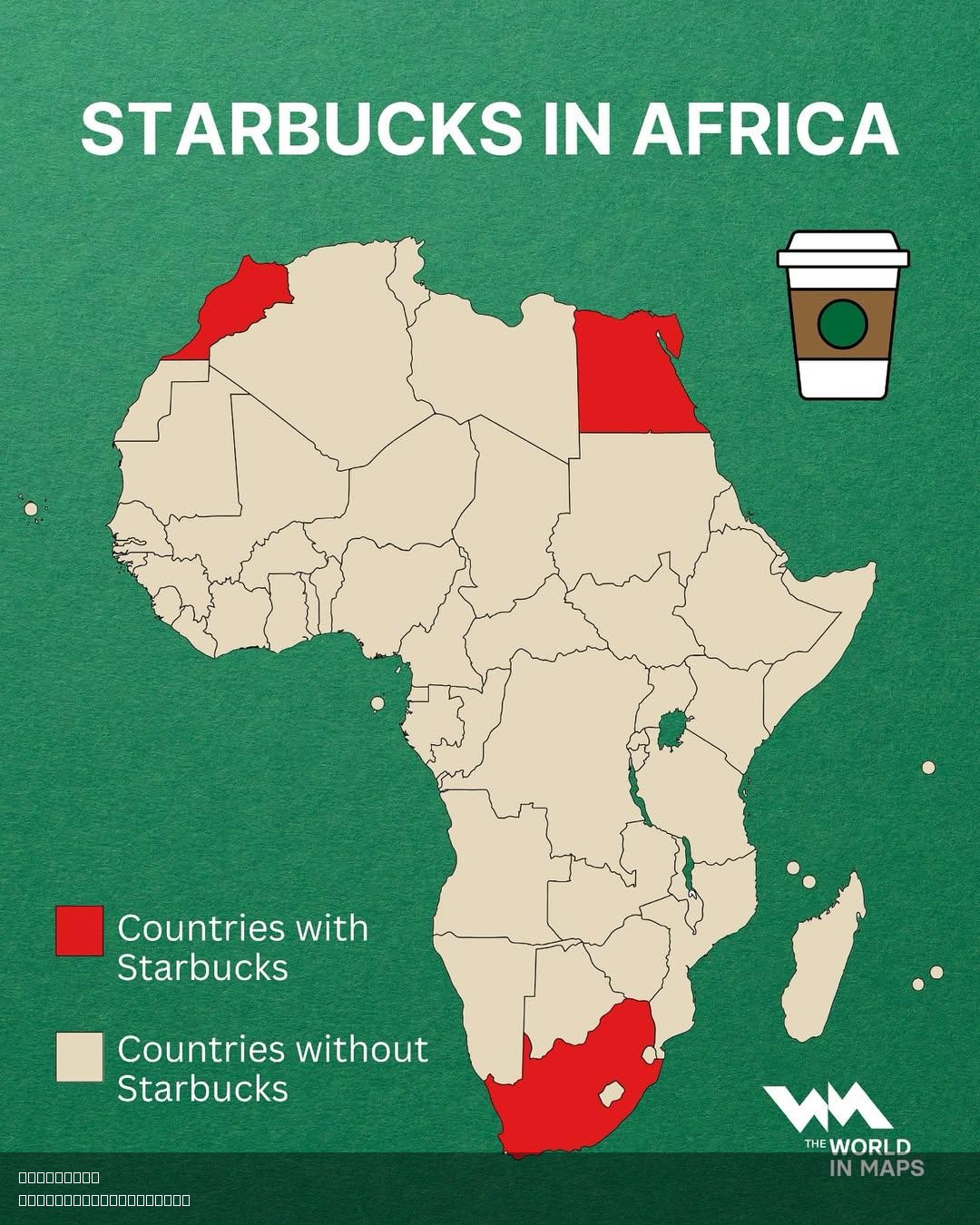Starbucks Locations in Africa Map


David Chen
Data Visualization Specialist
David Chen is an expert in transforming complex geographic datasets into compelling visual narratives. He combines his background in computer science ...
Geographic Analysis
What This Map Shows\nThis visualization highlights the locations of Starbucks stores across Africa. The map provides a clear representation of where this popular coffee chain has established its presence on the continent, offering insights into its expansion strategy and market penetration within various African nations.
Interestingly, Starbucks entered the African market relatively recently, with its first store opening in Johannesburg, South Africa, in 2016. Since then, the brand has expanded its footprint, and this map showcases each location, illustrating how Starbucks is gradually becoming a staple in urban centers across the continent.
Deep Dive into Starbucks in Africa\nStarbucks, known for its specialty coffee and unique café experience, has been making waves in the global market, and its expansion into Africa is a part of a broader strategy to tap into emerging markets. The coffee culture in Africa is rich and diverse, dating back centuries, with coffee being a crucial part of many local traditions. However, Starbucks aims to introduce its brand of coffee culture, blending elements of American café style with local flavors and preferences.
The company’s entry into Africa isn't merely about selling coffee; it's about establishing a new social space for communities. In cities like Johannesburg and Cape Town, Starbucks locations are designed to be inviting, providing a place for both locals and tourists to gather. This shift towards a more communal coffee experience is notable in a continent where coffee has historically been enjoyed in different social contexts.
As of now, South Africa is the largest market for Starbucks on the continent, with multiple locations primarily in urban areas. In addition to South Africa, Starbucks has made its way into countries like Egypt and Kenya. Each of these markets presents unique challenges and opportunities. For instance, in Kenya, where coffee is a major export and part of the national identity, Starbucks has had to adapt its offerings to cater to local tastes. This involves sourcing beans from local farmers and incorporating traditional Kenyan flavors into their beverages.
In terms of statistics, the growth rate of Starbucks stores in Africa has been steady, albeit slow compared to other regions. The company plans to continue expanding, particularly in West Africa, where the coffee market is burgeoning. However, challenges such as economic fluctuations, competition from local coffee shops, and varying consumer preferences pose significant hurdles.
Regional Analysis\nBreaking down the map by regions, we can observe distinct patterns in Starbucks' presence. In Southern Africa, South Africa stands out with the highest concentration of stores. The country’s relatively stable economy and established middle class create a conducive environment for Starbucks to thrive. This region’s urban centers, like Johannesburg, Cape Town, and Durban, are where most of the stores are located, reflecting a strategy to target densely populated areas with higher purchasing power.
Moving to East Africa, Kenya follows as the next significant market for Starbucks. Here, the brand competes with a rich local coffee culture, which includes numerous independent coffee shops that showcase Kenyan coffee. The entry of Starbucks has brought both competition and a new standard for quality and customer experience in the coffee industry.
In North Africa, Egypt marks Starbucks' presence with a few stores primarily in Cairo. The Egyptian market presents a different dynamic, influenced by cultural norms around coffee consumption and the country's economic landscape. The map shows that, while Starbucks has a foothold in these regions, there is still a vast potential for growth in other African countries, such as Nigeria and Ghana, where coffee consumption is on the rise.
Significance and Impact\nThe map of Starbucks locations in Africa is not just a reflection of the company's expansion; it signifies a broader trend of globalization and the increasing influence of Western brands in emerging markets. This topic matters for several reasons. Firstly, it highlights the changing landscape of consumer habits in Africa, where brand recognition and quality experiences are becoming increasingly important to a growing middle class.
Moreover, Starbucks' presence in Africa can have significant economic implications. The company often engages in community programs, from sourcing coffee beans from local farmers to supporting social initiatives. This can lead to job creation and economic development in the areas where they operate. However, it also raises questions about the impact of foreign corporations on local businesses and coffee culture.
Looking ahead, the future of Starbucks in Africa will likely hinge on its ability to adapt to local tastes while maintaining its global brand identity. As coffee consumption continues to rise across the continent, the strategic choices made by Starbucks could influence not just the brand’s success but also the broader coffee market in Africa. Will Starbucks continue to thrive, or will it face challenges that reshape its approach in the years to come? Only time will tell as this dynamic market evolves.
Visualization Details
- Published
- August 5, 2025
- Views
- 124
Comments
Loading comments...